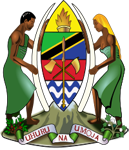
MINISTRY OF HEALTH
Neglected Tropical Diseases Control Program Tanzania

Schistosomiasis is caused by infection with trematodes S. mansoni, S. mekongi, S.japonicum and S. intercalatum. Urinary Schistosomiasis is caused by infection with S.haematobium.
Schistosomiasis is known to be highly endemic across Tanzania with published data suggesting that all regions have some level of infection. This can range from 12.7% to 87.6% for schistosomiasis. Urine questionnaire mapping for S. haematobium has been conducted in every school for the entire country in addition to limited mapping by stool examination for S. mansoni prevalence around the Lake Victoria regions.
The major contributory factors to such high levels of infection are limited access to safe water and lack of or poor environmental sanitation. Individuals are therefore continually exposed to the parasites and re-infection levels are high.
The consequences of these diseases globally are well documented, but particularly within Tanzania which has been a major focus for research into the transmission dynamics and morbidity caused by helminth infections. A study conducted in 1994 in Ukerewe district found the prevalence of Schistosoma mansoni to be 86.3%, with many individuals suffering severe consequences of disease such as hepatomegaly (35%) and/or splenomegaly (80%) (Kardoff et al. 1997). In a further study conducted in 2006 of the same individuals, S.mansoni prevalence was still over 80%.